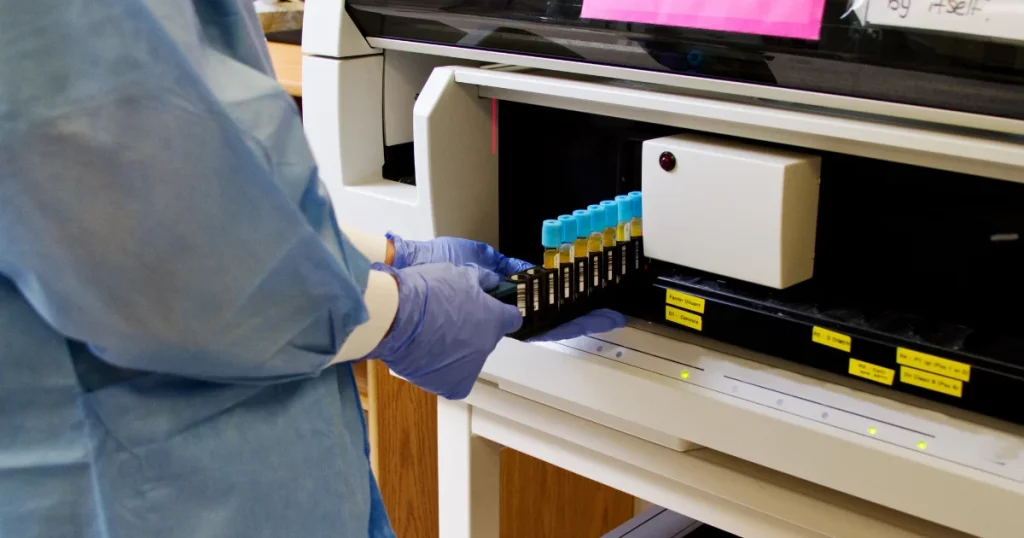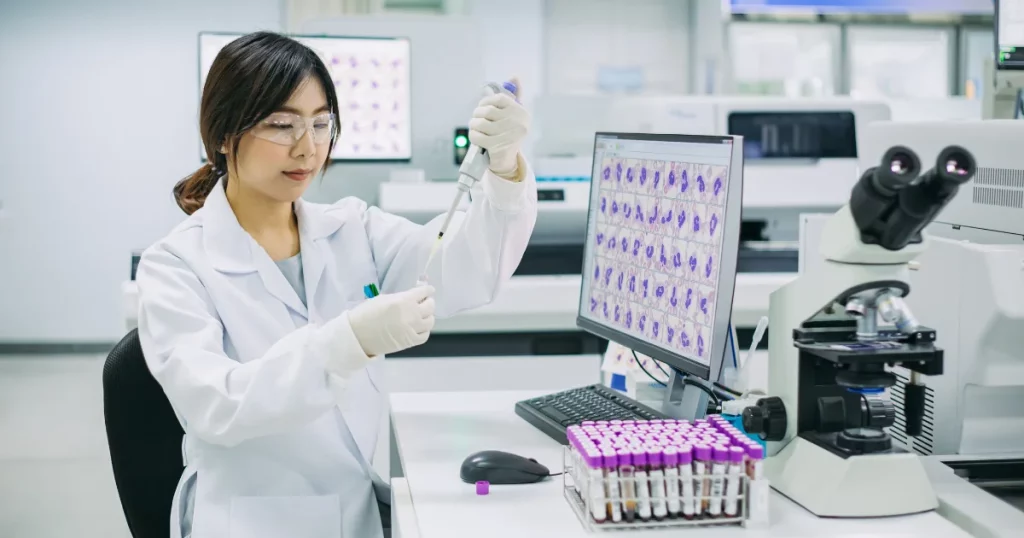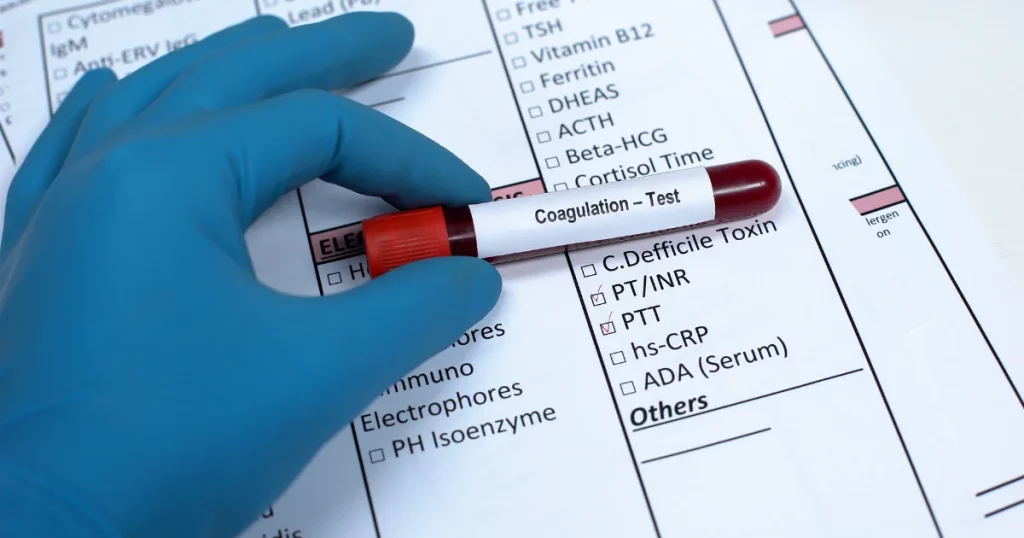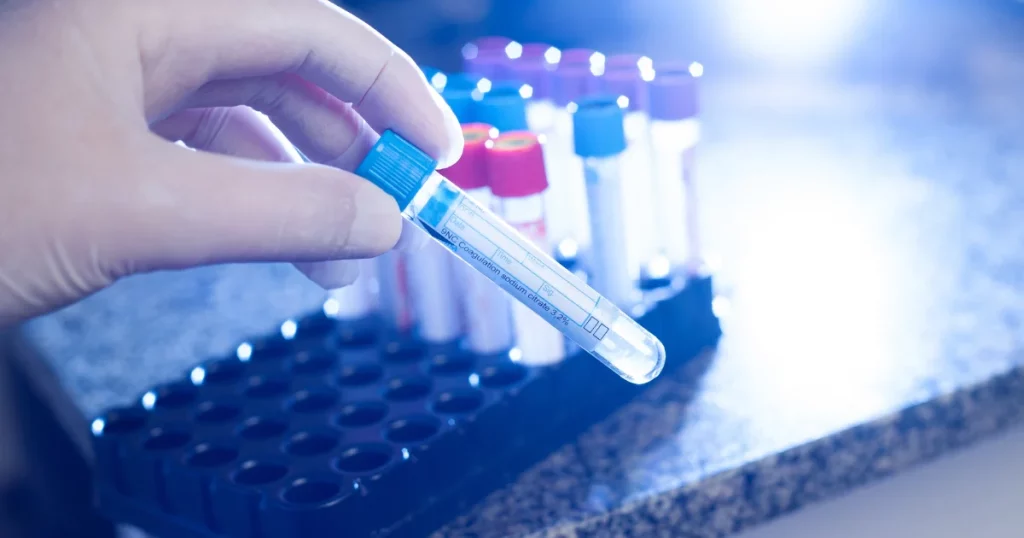Imagine a scenario: a small cut on your finger. While seemingly inconsequential, this minor wound sets into motion a complex dance within your bloodstream. This guide embarks on a journey through the intricate world of blood coagulation—unveiling the importance of clotting, the potential issues it poses, and the crucial role played by blood coagulation analyzers.
Table of Contents
The Crucial Role of Blood Clotting
Blood coagulation is not just a bodily function; it’s a safeguard, preventing excessive bleeding and maintaining the delicate balance between clotting and blood flow. This introduction sets the stage for a deeper exploration into the world of clotting, its intricacies, and the potential consequences of disruptions.
Demystifying Blood Coagulation
Delving into the mechanics, we unravel the essential players: platelets and clotting factors. This section provides a simplified breakdown of the cascade of reactions orchestrating the formation of blood clots. It also sheds light on the importance of maintaining equilibrium, preventing both excessive bleeding disorders like hemophilia and the heightened risk of blood clots leading to severe complications such as stroke or heart attack. Here’s an overview of the fundamental aspects:
1. Basic Process of Blood Clotting
- Blood clotting involves a series of sequential and interdependent reactions that aim to staunch bleeding when a blood vessel is injured.
- The process initiates with vasoconstriction, reducing blood flow to the injured site.
2. Role of Platelets and Clotting Factors
- Platelets: These small cell fragments play a pivotal role in the initial response to injury. They adhere to the exposed collagen at the injury site, forming a temporary plug.
- Clotting Factors: Proteins in the blood plasma, known as clotting factors, contribute to the formation of a stable blood clot.
3. Cascade of Reactions Leading to Clot Formation
- The intrinsic and extrinsic pathways converge in a cascade of reactions leading to the conversion of prothrombin to thrombin.
- Thrombin facilitates the conversion of fibrinogen into fibrin threads, creating a mesh that reinforces the platelet plug, forming a stable blood clot.
4. Maintaining a Healthy Balance
A delicate equilibrium exists between clotting factors and anticoagulants to ensure an appropriate response to injuries without excessive clot formation.
Anticoagulants, such as proteins C and S, counterbalance the pro-coagulant activities, preventing uncontrolled clotting within the blood vessels.
5. Consequences of Abnormal Blood Clotting
- Excessive Bleeding Disorders: Conditions like hemophilia, characterized by deficiencies in clotting factors, lead to prolonged bleeding even after minor injuries.
- Increased Risk of Blood Clots (Thrombosis): Imbalances in clotting factors or impaired anticoagulant mechanisms can result in abnormal blood clot formation.
- Complications: Thrombosis can lead to severe complications, including strokes or heart attacks, depending on the location of the blood clot.
Understanding the intricacies of blood coagulation is vital for clinicians to diagnose and manage conditions related to clotting disorders. Maintaining a healthy balance in coagulation ensures effective wound healing while preventing both excessive bleeding and the complications associated with abnormal blood clotting.
Also read: A Guide to Automatic Hematology Analyzers
Enter the Blood Coagulation Analyzer

Transitioning into the technological realm, we introduce blood coagulation analyzers as indispensable tools in healthcare. Offering a brief yet comprehensive understanding of their function—measuring the time it takes for blood to clot—this section sets the stage for a deeper dive into the working principles of these analyzers. Here’s a glimpse into their significance and basic functionality:
1. Vital Tools in Healthcare
- Blood coagulation analyzers are indispensable instruments in medical laboratories, aiding healthcare professionals in diagnosing and managing various coagulation disorders.
- These analyzers contribute to precise and timely assessments of clotting mechanisms, ensuring optimal patient care.
2. Basic Function
- The primary function of blood coagulation analyzers is to measure the time it takes for blood to clot under controlled conditions.
- This measurement, often referred to as the coagulation time or clotting time, provides critical insights into the efficiency of the clotting cascade.
3. Working Principle
- At a high level, blood coagulation analyzers operate by initiating and monitoring the coagulation process in a controlled environment.
- A blood sample, typically mixed with specific reagents, undergoes a series of reactions mimicking the natural clotting process.
- The analyzer then detects and records the time it takes for the blood to form a stable clot.
Understanding the coagulation time aids in diagnosing conditions such as hemophilia, monitoring patients on anticoagulant therapy, and assessing the risk of abnormal clotting disorders. Blood coagulation analyzers contribute to the precision and efficiency of clinical assessments, guiding healthcare professionals in providing tailored and effective patient care.
Exploring Different Types and Features
This segment navigates through the variety of blood coagulation analyzers available. From automated to semi-automated, point-of-care to benchtop models, we dissect the differences in user involvement and portability. Discussing key features such as measured parameters, speed, data management, and ease of use, we provide insights to help readers make informed choices based on their specific needs. Understanding the distinctions can guide healthcare professionals in choosing the right analyzer for specific settings and requirements:
1. Automated vs. Semi-automated
- Automated Analyzers: These require minimal user involvement, streamlining the testing process with advanced technology. Ideal for high-throughput settings where efficiency is paramount.
- Semi-automated Analyzers: Involve some manual steps and are suitable for settings where a balance between automation and user control is preferred.
2. Point-of-Care (POC) vs. Benchtop
- POC Analyzers: Designed for portability and quick on-site testing, making them suitable for scenarios where immediate results are critical, such as emergency settings.
- Benchtop Analyzers: More stationary but often offer higher throughput and comprehensive testing capabilities, making them ideal for larger healthcare facilities.
3. Key Features
- Parameters Measured: Common tests include PT (prothrombin time), aPTT (activated partial thromboplastin time), TT (thrombin time), and fibrinogen levels. The choice depends on the specific information needed for diagnosis.
- Speed and Throughput: Automated analyzers typically provide faster results, while semi-automated models might take longer but offer more user control. Consider the balance between speed and user preferences.
- Data Management and Reporting: Advanced analyzers come equipped with features for efficient data storage, analysis, and reporting. This aids in maintaining comprehensive patient records and facilitating communication among healthcare professionals.
- Ease of Use and Maintenance: Consider the intended user group when assessing ease of use. Automated systems often require less hands-on expertise, while semi-automated models might offer more user control.
Choosing the right type and features of a blood coagulation analyzer depends on factors such as the volume of testing, the urgency of results, and the level of user expertise. Tailoring the choice to specific healthcare settings ensures optimal performance and contributes to effective patient care.
Applications of Blood Coagulation Analyzers

This section sheds light on the diverse applications of blood coagulation analyzers across healthcare settings. From diagnosing bleeding disorders to monitoring anticoagulation therapy, assessing pre-operative bleeding risks, and contributing to research and development, these analyzers emerge as versatile instruments shaping the landscape of medical care. Blood coagulation analyzers play a pivotal role across diverse healthcare settings, contributing to several crucial applications:
1. Diagnosing Bleeding Disorders: Blood coagulation analyzers are instrumental in diagnosing bleeding disorders by assessing the clotting ability of blood. This aids in identifying deficiencies in clotting factors or platelets, guiding healthcare professionals in developing targeted treatment plans.
2. Monitoring Anticoagulation Therapy: Ensuring Safe and Effective Blood Thinners Usage:* Patients on anticoagulation therapy, such as those prescribed blood thinners, require careful monitoring. Blood coagulation analyzers help assess the effectiveness of these medications, ensuring that the anticoagulation therapy achieves the desired balance between preventing excessive clotting and avoiding the risk of bleeding.
3. Pre-operative Risk Assessment: Prior to surgical procedures, assessing the patient’s blood coagulation status is crucial. Blood coagulation analyzers assist in identifying potential bleeding risks, allowing healthcare teams to take necessary precautions and optimize patient safety during surgery.
4. Research and Development: Contribution to Advancing Knowledge:* Blood coagulation analyzers play a vital role in research and development within the medical field. By providing accurate and standardized measurements of clotting parameters, these analyzers contribute to a deeper understanding of coagulation processes. This knowledge, in turn, contributes to the development of innovative therapies and interventions.
Understanding the diverse applications of blood coagulation analyzers underscores their significance in clinical practice, research endeavors, and pre-operative care. These analyzers not only aid in the diagnosis and management of bleeding disorders but also contribute to advancing medical knowledge and improving patient outcomes.
Understanding the Results (Disclaimer)

Acknowledging the power of information, we issue a gentle reminder on the importance of consulting healthcare professionals for result interpretation. This section discourages self-diagnosis based on analyzer readings and directs readers to additional resources for a deeper understanding of blood coagulation and related conditions.
Interpreting the Results
It is crucial to recognize that interpreting blood coagulation analyzer results requires the expertise of a qualified healthcare professional. The following points are emphasized:
1. Consulting a Healthcare Professional: Analyzer results should be discussed with a healthcare professional, such as a hematologist or clinician, who possesses the necessary expertise to provide accurate and context-specific interpretations.
2. Discouraging Self-Diagnosis: Blood coagulation is a complex process influenced by various factors. Attempting to self-diagnose or draw conclusions from analyzer readings may lead to misinterpretations and potential health risks.
3. Resources for Information: For individuals seeking additional information on blood coagulation and related conditions, it is recommended to refer to reputable educational resources, medical literature, or healthcare providers who can offer reliable guidance.
In conclusion, while blood coagulation analyzers provide valuable insights, their results should be viewed as a component of a comprehensive diagnostic approach. Seeking professional guidance ensures accurate interpretation and appropriate actions for managing coagulation-related concerns.
Conclusion
Navigating the Clotting Cascade
As we reach the culmination of this guide, we recap the key takeaways, emphasizing the symbiotic relationship between blood coagulation, analyzers, and their impact on healthcare. Encouraging readers to explore further and offering a call to action—suggesting consultation with healthcare professionals for any concerns—we conclude this journey through the intricate dance of blood clotting and its analytical counterpart.
Disclaimer
While this guide aims to empower with knowledge, it’s paramount to consult healthcare professionals for personalized medical advice. The complexities of blood coagulation and its disorders warrant expert guidance, ensuring that the insights gained from blood coagulation analyzers contribute to well-informed decisions and a healthier, more informed life.
FAQ
Why is blood coagulation considered a crucial bodily function, and what role does it play in maintaining a delicate balance between clotting and blood flow?
Answer: Blood coagulation serves as a safeguard, preventing excessive bleeding and maintaining a balance between clotting and blood flow, ensuring effective wound healing.
What are the fundamental players in blood coagulation, and how do platelets and clotting factors contribute to the formation of stable blood clots?
Answer: Platelets adhere to the exposed collagen at the injury site, forming a temporary plug. Clotting factors, proteins in the blood plasma, contribute to the formation of a stable blood clot through a cascade of reactions.
Can you provide an overview of the basic process of blood clotting and the critical steps involved when a blood vessel is injured?
Answer: Blood clotting involves vasoconstriction, platelet adhesion, and a cascade of reactions converging to form a stable blood clot, initiated when a blood vessel is injured.
How does the delicate equilibrium between clotting factors and anticoagulants contribute to maintaining a healthy balance in blood coagulation?
Answer: Clotting factors and anticoagulants ensure an appropriate response to injuries without excessive clot formation, preventing uncontrolled clotting within blood vessels.
What are the consequences of abnormal blood clotting, and how do conditions like hemophilia and thrombosis manifest?
Answer: Abnormal blood clotting can lead to conditions like hemophilia, characterized by prolonged bleeding, and thrombosis, an increased risk of abnormal blood clot formation, potentially causing severe complications like strokes or heart attacks.
How do blood coagulation analyzers contribute to the diagnosis and management of clotting disorders, and what insights do they provide to healthcare professionals?
Answer: Blood coagulation analyzers measure clotting time, aiding in the diagnosis of conditions like hemophilia and the monitoring of anticoagulant therapy, providing critical insights into clotting efficiency.
What is the primary function of blood coagulation analyzers, and how do they operate at a high level to assess the clotting cascade?
Answer: Blood coagulation analyzers measure the time it takes for blood to clot. They operate by initiating and monitoring the coagulation process, mimicking natural clotting reactions in a controlled environment.
What are the distinctions between automated and semi-automated blood coagulation analyzers, and in what healthcare settings are each type more suitable?
Answer: Automated analyzers require minimal user involvement and are ideal for high-throughput settings, while semi-automated analyzers involve some manual steps and are suitable for settings requiring a balance between automation and user control.
How do blood coagulation analyzers vary in terms of user involvement, portability, and measured parameters, and how can healthcare professionals choose the right analyzer for specific settings?
Answer: They vary in automation levels, portability (point-of-care vs. benchtop), and measured parameters (PT, aPTT, TT, fibrinogen). Healthcare professionals should consider volume, urgency, and user expertise when choosing an analyzer.
What are the diverse applications of blood coagulation analyzers in healthcare settings, and how do they contribute to diagnosing bleeding disorders, monitoring anticoagulation therapy, assessing pre-operative bleeding risks, and advancing research and development?
Answer: Blood coagulation analyzers contribute to diagnosing bleeding disorders, monitoring therapy, assessing bleeding risks pre-operatively, and advancing research, showcasing their versatility in various healthcare applications.




